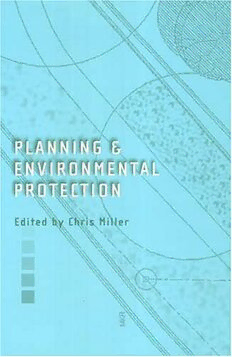
Planning and Environmental Protection: A Review of Law and Policy PDF
286 Pages·2001·0.788 MB·English
Most books are stored in the elastic cloud where traffic is expensive. For this reason, we have a limit on daily download.
Preview Planning and Environmental Protection: A Review of Law and Policy
Description:
This collection of essays examines the roles which land use planning can play in the protection of the environment. The subjects covered range from traditional concerns like pollution, nuisance and contaminated land to biodiversity and the pursuit of sustainable development, which forms the defining element of current environmental policy across the European Community and in most other developed economies. Environmental assessment is discussed, along with the succession of public law actions (Twyford Down included) by environmental activists which were necessary to convince the English courts of the full implications (and the "direct effect") of the EC Directive 85/337. The later chapters become progressively more concerned with the planning system as the forum of negotiation and more participatory approaches (as distinct from fiscal instruments and command and control regulation) to encouraging sustainability. The contributors represent a variety of academic disciplines (law, geography, planning, environmental management) offering complementary insights into the planner's role in allocating land uses so as to minimize waste generation and energy consumption as well as maximizing local amenity.
See more
The list of books you might like
Most books are stored in the elastic cloud where traffic is expensive. For this reason, we have a limit on daily download.
